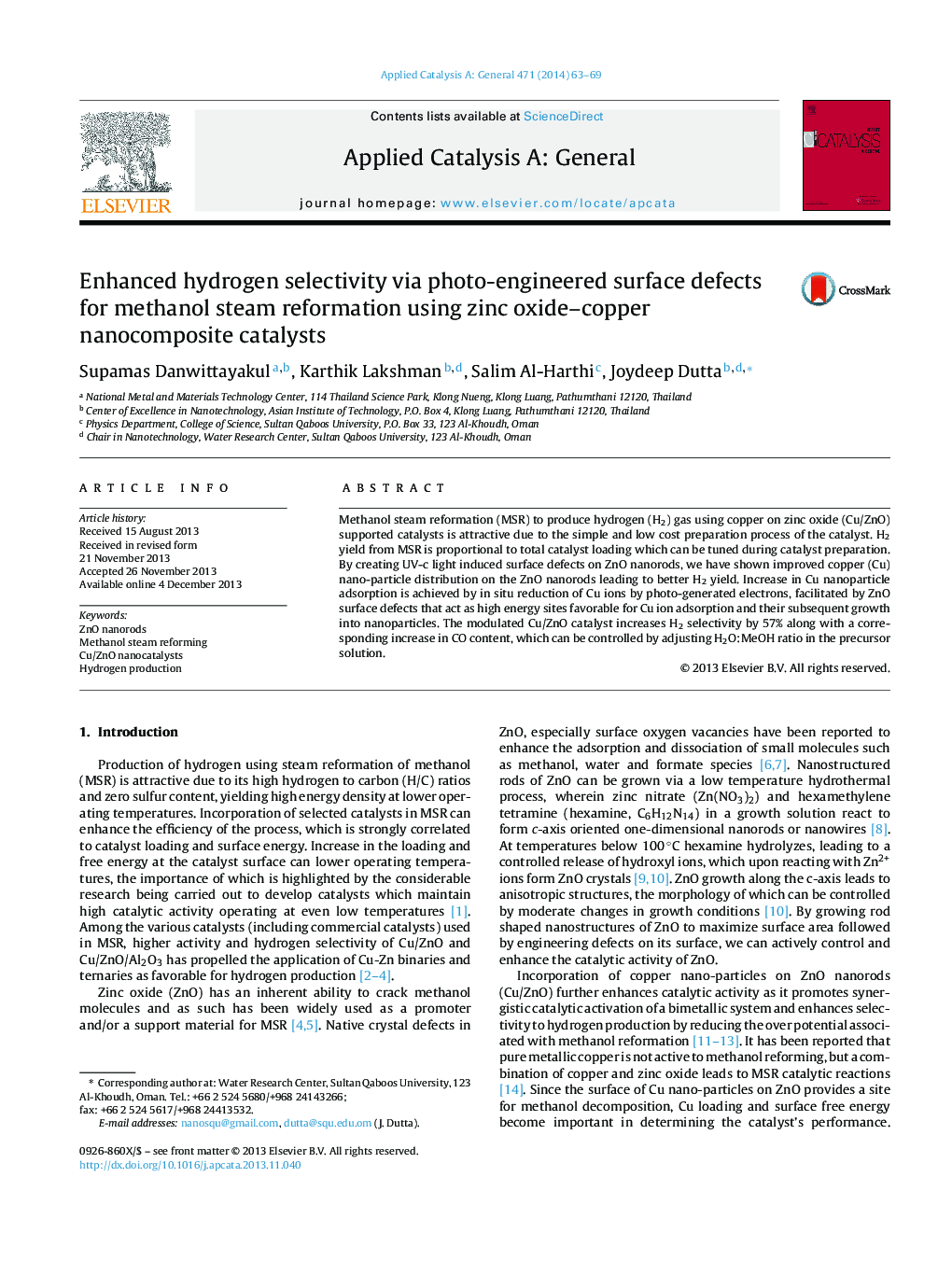| کد مقاله | کد نشریه | سال انتشار | مقاله انگلیسی | نسخه تمام متن |
|---|---|---|---|---|
| 39900 | 45839 | 2014 | 7 صفحه PDF | دانلود رایگان |
• Ultraviolet (UV-c) light induced defect creation on ZnO nanorod surfaces.
• Defect mediated copper (Cu) ion adsorption on ZnO nanorod surfaces.
• A novel UV pathway to increase metal nanoparticle loading on supported catalysts.
• 57% improvement in catalyst H2 selectivity performance.
Methanol steam reformation (MSR) to produce hydrogen (H2) gas using copper on zinc oxide (Cu/ZnO) supported catalysts is attractive due to the simple and low cost preparation process of the catalyst. H2 yield from MSR is proportional to total catalyst loading which can be tuned during catalyst preparation. By creating UV-c light induced surface defects on ZnO nanorods, we have shown improved copper (Cu) nano-particle distribution on the ZnO nanorods leading to better H2 yield. Increase in Cu nanoparticle adsorption is achieved by in situ reduction of Cu ions by photo-generated electrons, facilitated by ZnO surface defects that act as high energy sites favorable for Cu ion adsorption and their subsequent growth into nanoparticles. The modulated Cu/ZnO catalyst increases H2 selectivity by 57% along with a corresponding increase in CO content, which can be controlled by adjusting H2O:MeOH ratio in the precursor solution.
Figure optionsDownload high-quality image (156 K)Download as PowerPoint slide
Journal: Applied Catalysis A: General - Volume 471, 10 February 2014, Pages 63–69
